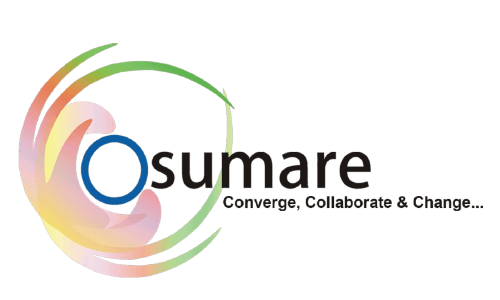In today’s digital landscape, the competition to gain online visibility is at an all-time high. Businesses are constantly looking for ways to attract potential customers without relying solely on paid advertising. This is where Search Engine Optimization (SEO) becomes a game-changer. SEO is the art and science of optimizing your website to rank higher on search engine results pages (SERPs), thereby increasing the chances of organic traffic — visitors coming to your site without being prompted by paid advertisements. When executed effectively, SEO doesn’t just bring more visitors; it brings the right visitors — those actively searching for what you offer.
What is Organic Traffic?
Organic traffic refers to the visitors who find your website through unpaid search results on platforms like Google, Bing, or Yahoo. It’s different from paid traffic, where businesses use ads to drive users to their site. Instead, organic traffic is earned through relevance and quality, which is determined by search engines. For example, when a user types a query like “best hiking gear,” search engines present results based on their algorithms. If your website ranks high because of effective SEO practices, you’re more likely to attract these users.
The beauty of organic traffic lies in its sustainability. Once you’ve optimized your website and built a strong SEO foundation, your site can continue to draw visitors over time without ongoing costs. This makes organic traffic an essential component of any long-term digital marketing strategy.
Why is Organic Traffic Important?
1. Cost-Effective Growth
Unlike paid advertisements that require ongoing budgets, organic traffic is free. While you might invest time and resources in SEO initially, the results compound over time. A well-optimized website can continue to attract visitors for months or even years without additional expense. This makes SEO one of the most cost-effective marketing channels for businesses of all sizes.
2. Higher Credibility and Trust
Appearing on the first page of search engine results signals credibility to users. People trust Google to present the most relevant and reliable information, so ranking high builds trust in your brand. Users are more likely to click on organic results than on paid ads, as they perceive organic rankings to be more authentic and less biased.
3. Increased Website Visibility
The internet is a crowded space, with countless websites competing for attention. SEO helps ensure your brand stands out by improving your visibility on SERPs. The more visible your website, the more opportunities you have to connect with potential customers. It’s not just about appearing on the first page — it’s about being seen by the right audience at the right time.
4. Sustainable Results
While paid advertising stops bringing traffic as soon as the budget runs out, the impact of SEO is long-lasting. A well-executed SEO strategy continues to drive visitors over time, providing a steady stream of traffic and leads. This sustainability makes SEO a crucial investment for businesses looking to grow organically.
How SEO Drives Organic Traffic
1. Keyword Research and Optimization
One of the cornerstones of SEO is keyword research — the process of identifying the terms and phrases your target audience is searching for. By understanding these keywords, you can create content that aligns with user intent. For example, if people are searching for “how to bake a cake,” you can create a detailed blog post or video that answers this query. Including these keywords strategically in your content, meta tags, headings, and URLs ensures that search engines recognize your relevance to the query, boosting your rankings.
Effective keyword optimization goes beyond stuffing words into your content. It’s about understanding the nuances of search intent and providing value. Long-tail keywords, which are more specific phrases, often have lower competition and higher conversion rates. Focusing on these can help you rank more quickly and attract highly targeted traffic.
2. High-Quality Content Creation
Content is the backbone of any successful SEO strategy. Search engines prioritize websites that offer valuable, informative, and engaging content. This means your blog posts, videos, infographics, and other content formats should provide real value to your audience. Instead of simply promoting your products, focus on addressing your audience’s questions, solving their problems, or educating them about topics they care about.
For example, a fitness brand might create content around “10-minute home workouts for beginners” or “best foods for post-workout recovery.” Such content not only drives traffic but also positions the brand as an authority in its niche. High-quality content is also more likely to be shared, linked to, and bookmarked, further boosting your SEO performance.
3. On-Page SEO
On-page SEO involves optimizing individual web pages to improve their rankings and drive traffic. This includes strategically placing keywords in titles, meta descriptions, and headers, as well as ensuring your content is easy to read and navigate. But on-page SEO isn’t just about keywords — it’s also about providing a seamless user experience.
For instance, adding internal links helps users explore related content on your site, keeping them engaged longer. Optimizing images with alt text not only improves accessibility but also enhances your site’s ranking for image search queries. A clean, well-structured website that’s mobile-friendly and fast-loading encourages users to stay longer, reducing bounce rates and boosting your rankings.
4. Technical SEO
Technical SEO focuses on the backend aspects of your website that impact search engine crawling and indexing. A fast-loading site with no broken links, a secure HTTPS connection, and a proper XML sitemap is more likely to rank higher.
Search engines favor websites that offer a smooth browsing experience. If your website takes too long to load or has frequent errors, users are likely to leave, signaling to search engines that your site isn’t providing value. Regularly auditing your website for technical issues ensures it performs optimally and ranks well.
5. Building Backlinks
Backlinks, or inbound links from other websites, are like votes of confidence for your content. When reputable websites link to your content, it signals to search engines that your website is authoritative and trustworthy. However, not all backlinks are created equal — quality matters more than quantity.
Focus on earning backlinks from credible sources by creating shareable, high-quality content. Guest posting, reaching out to industry influencers, and building partnerships can also help you acquire valuable backlinks that boost your SEO.
Measuring the Impact of SEO on Organic Traffic
To understand how SEO is contributing to your organic traffic, it’s essential to track and measure key metrics. Tools like Google Analytics and Google Search Console allow you to monitor:
- Organic Traffic Volume: The number of visitors coming from search engines.
- Keyword Rankings: How your targeted keywords perform on SERPs.
- Engagement Metrics: Bounce rates, session durations, and pages per session.
- Conversions: Actions taken by users, such as filling out a form or making a purchase.
Conclusion
SEO plays an indispensable role in driving organic traffic, helping businesses achieve sustainable growth without relying on paid advertising. From keyword research to technical optimization, every aspect of SEO contributes to making your website more visible, engaging, and trustworthy.
In the digital age, where competition for attention is fierce, investing in SEO is not just an option but a necessity. By understanding your audience, creating high-quality content, and staying up-to-date with best practices, you can harness the full potential of SEO to grow your business organically. Start optimizing today, and watch your website climb the search engine rankings while attracting a steady stream of valuable traffic.

